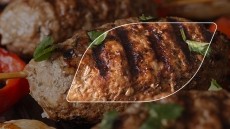Sugar beet pectin-protein nanoparticles show encapsulation potential
formation of core-shell systems for use as encapsulators or fat
replacers, suggests new research.
The new study used an electrostatic deposition process to prepare so-called coreshell biopolymer particles that could be used to encapsulate, protect and deliver functional ingredients such as proteins, fibres, lipids, or nutraceuticals, according to research published in the Journal of Food Science. Lead researcher D. Julian McClements from the Department of Food Science at the University of Massachusetts told FoodNavigator that the particles may be useful for a number of reasons:
Opacity - mimicking light scattering by fat droplets to make cloudy systems, which could be applied to beverages, and
Texture modification - viscosity and mouthfeel modification delivery systems - encapsulation, protection and delivery of functional components.
"The biopolymer particles produced using the above-mentioned approach would be assembled entirely from food grade ingredients (proteins and dietary fibres) using simple processing operations (mixing and pH adjustment)," wrote the researchers. "Consequently, they could be economically produced by the food industry on a large scale," they added. The researchers, affiliated with the University of Massachusetts and Mahidol University in Bangkok, electrostatically deposited sugar beet pectin onto a heat-denatured beta-lactoglobulin protein. Stable core-shell biopolymer particles were formed by mixing a suspension of protein aggregates (formed by heating the beta-lactoglobulin at 80C at pH 5.8) with the sugar beet pectin at pH 7, and then adjusting the pH to below pH6 where the pectin is adsorbed. The particles were found to be stable over the pH range of 4 to 7, but clumped together or aggregated under more acidic conditions. The particles did not clump together in salt concentrations less than 250 millimoles at pH4, "indicating that they had good salt stability," wrote the researchers. The researchers said that further studies should focus on analysing the fine structure of the nanoparticles. "It should be noted that we used beet pectin in this study, which has different molecular characteristics than other types of commonly used pectins (such as apple or citrus pectin)," they added. "Further research is therefore needed to understand how other types of pectin and anionic polysaccharides impact the formation and stability of biopolymer core-shell particles. In particular, it would be advantageous to carry out future research using anionic polysaccharides with well-defined molecular characteristics." Source: Journal of Food Science Published online ahead of print, doi: 10.1111/j.1750-3841.2008.00804.x "Core-Shell Biopolymer Nanoparticles Produced by Electrostatic Deposition of Beet Pectin onto Heat-Denatured -Lactoglobulin Aggregates" Authors: R. Santipanichwong, M. Suphantharika, J. Weiss, D.J. McClements




















